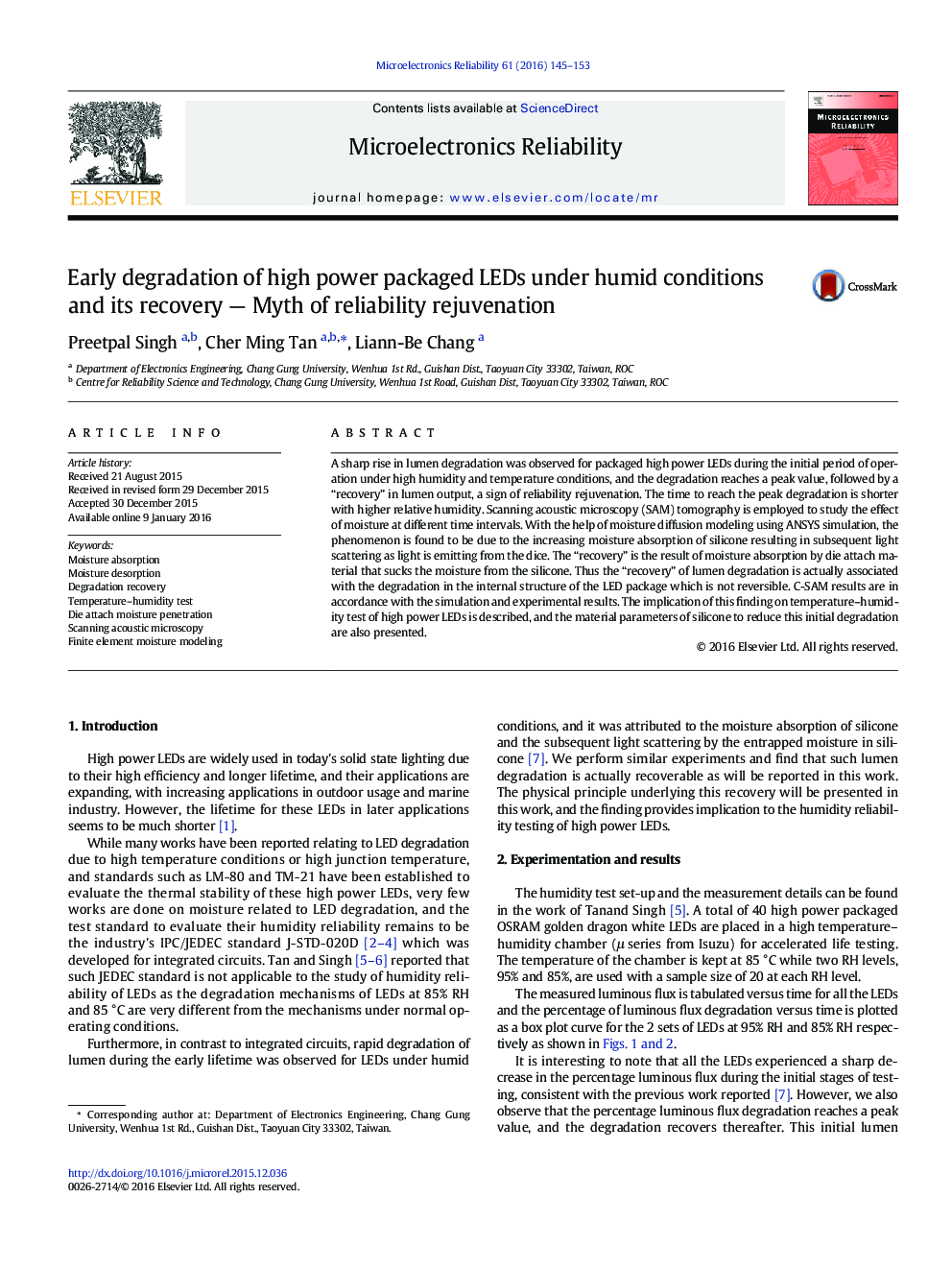| Article ID | Journal | Published Year | Pages | File Type |
|---|---|---|---|---|
| 544627 | Microelectronics Reliability | 2016 | 9 Pages |
•Lumen recovery after sharp decrease in the percentage lumen flux is observed during high humidity tests for high power LEDs.•The moisture absorption-desorption simulation is done using ANSYS software in order to understand this recovery phenomena.•Lumen recovery is due to the moisture sucking action of the die attach, resulting in lower moisture content in silicone.•However, such lumen recovery signify the beginning of permanent degradation of LEDs, instead of reliability rejuvenation.
A sharp rise in lumen degradation was observed for packaged high power LEDs during the initial period of operation under high humidity and temperature conditions, and the degradation reaches a peak value, followed by a “recovery” in lumen output, a sign of reliability rejuvenation. The time to reach the peak degradation is shorter with higher relative humidity. Scanning acoustic microscopy (SAM) tomography is employed to study the effect of moisture at different time intervals. With the help of moisture diffusion modeling using ANSYS simulation, the phenomenon is found to be due to the increasing moisture absorption of silicone resulting in subsequent light scattering as light is emitting from the dice. The “recovery” is the result of moisture absorption by die attach material that sucks the moisture from the silicone. Thus the “recovery” of lumen degradation is actually associated with the degradation in the internal structure of the LED package which is not reversible. C-SAM results are in accordance with the simulation and experimental results. The implication of this finding on temperature–humidity test of high power LEDs is described, and the material parameters of silicone to reduce this initial degradation are also presented.
